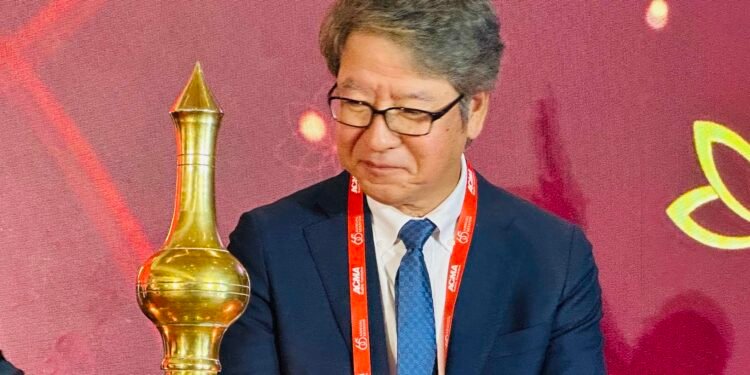NEW DELHI:When Maruti Suzuki India’s Managing Director and CEO Hisashi Takeuchi declared that “the next many decades belong to India,” it was more than a vote of confidence in the country’s economic trajectory. It was also a timely reminder that India’s auto industry, a cornerstone of its manufacturing and export economy, stands at a critical juncture. His words came even as he acknowledged the formidable challenge posed by steep U.S. tariffs on Indian auto component exports.
Nearly 30 percent of India’s component exports are directed to the United States, where duties of 25 and 50 percent are now squeezing margins and rattling confidence. The disruption is real: USD 3.5 billion in passenger vehicle parts now face 25 percent duties, while another USD 3 billion in components for commercial vehicles, tractors, and construction equipment have been slapped with 50 percent tariffs.
Yet, the industry’s apex body, the Automotive Component Manufacturers Association of India (ACMA), insists this is turbulence the country can withstand. Director General Vinnie Mehta pointed out that in April–June, export flows remained steady at USD 1.77 billion, identical to last year’s level, showing “absolutely no impact” so far. But tariffs, however disruptive, are only one dimension of the challenges ahead.

Speaking at the 65th Annual Convention of ACMA, President Shradha Suri Marwah warned that India must urgently invest in innovation to stay competitive in a rapidly transforming global landscape.
“Technology disruption and the rapid shift to electrification, digitalization, and software-driven vehicles require unprecedented investments in R&D, technology, sustainability, and circularity,” she said. Without such commitments to research, sustainability frameworks, and next-generation mobility, India risks losing momentum just as its global presence is expanding.
Against this backdrop, the proposed India–EU Free Trade Agreement (FTA) takes on renewed importance. It is not merely a defensive hedge against U.S. tariffs but a strategic pathway to deeper technological partnerships. India already exports USD 6.7 billion worth of auto components to Europe and imports USD 5.7 billion in return, a relatively balanced trade equation.
For industry leaders, lowering trade barriers with the EU makes sense not only to boost exports but also to attract much-needed European investments in advanced technologies such as EV platforms, battery systems, and digital mobility solutions.
ACMA President Designate Vikrampati Singhania framed the U.S. tariff shock as a “transitionary phase,” cautioning that the real issue is not just the headline rate of 25 or 50 per cent but the relative competitive differential across countries. “We should not see 25 percent as 25 percent. We should see other countries are at 25 per cent or 19 per cent or at lower tariffs. It is a differential that is the real point to think about,” he observed. His perspective reflects a broader industry consensus: that diversification, diplomacy, and long-term partnerships matter more than temporary setbacks.
The sector’s outlook, therefore, is not one of despair but of urgency. While American clients have momentarily slowed purchases, with the USD 3.5 billion segment under 50 percent tariffs being the most exposed, Indian firms are already pivoting toward alternate markets. Negotiations with U.S. buyers are still ongoing, but the future focus is unmistakable: Europe, technology, and R&D-led competitiveness.
India’s auto component industry thus stands at a crossroads. On the one hand, punitive U.S. tariffs expose the risks of over-reliance on a single market. On the other, industry leaders remain united in believing that this is India’s moment to diversify, invest, and lead in a sector undergoing global disruption.
The choice before India is clear: tariffs may sting, but the industry cannot afford to remain reactive. Instead, this turbulence must serve as the catalyst to accelerate into an era defined by electrification, digitalization, sustainability, and innovation.
The next few decades may indeed belong to India, but only if the country bets not merely on scale and market access but on R&D and technology as the engines of its automotive future.
— WNN Op-Ed | Dr. Shahid Siddiqui, follow via X @shahidsiddiqui
WATCH, LIKE and SUBSCRIBE CHANNEL





















